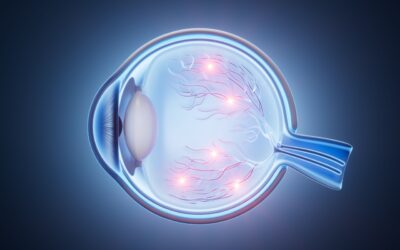Understanding the Complement System
In 1919, Jules Bordet received the Nobel Prize in Physiology or Medicine for discovering that heating serum to 56°C does not destroy its antibodies but does render them unable to kill bacteria. Bordet deduced the existence of a heat-sensitive, fragile component in serum that works with antibodies to eliminate bacteria, which he called “complement.” Today, we understand the complement as a multi-molecular system comprising more than 30 soluble proteins, membrane-binding proteins, and receptors, collectively known as the Complement System.
RELATED; Application of Protein Biomarkers in Pharmaceutical Research and Bioanalysis Strategies
The complement system can be activated through three pathways:
- Classical Pathway: Initiated by C1q-C1r2-C1s2 complex and antigen-antibody interactions.
- Alternative Pathway: Starts from C3 and functions independently of antibodies.
- Lectin Pathway (MBL Pathway): Activated by Mannan Binding Lectin (MBL) recognizing carbohydrates on pathogen surfaces.
These pathways converge at the terminal pathway, forming the membrane attack complex, which causes cytolysis. Table 1 compares these pathways and their physiological significance.
Importance of Complement Detection in Preclinical Drug Development
One type of complement detection involves therapeutic drugs that do not directly target complement factors, but the results of their pharmacological effects may impact the stability of the complement system. For example, antibody drugs with specific Fc effect fragments have their complement recognition sites obscured when not bound to antigens. When they bind to antigens, their complement recognition sites are captured by C1q, activating the complement system. In normal animals, if a drug leads to abnormal activation of the complement system, it might trigger type III hypersensitivity reactions. Complement detection can be an important indicator for interpreting pharmacological and toxic side effects.
RELATED: From screening to IND submission: Biomarker analysis in preclinical drug development
Another complement type involves therapeutic drugs that directly target complement factors, such as Eculizumab, Raculizumab, Narsoplimab, Avacopan, and others, mainly complement inhibitors. These drugs are primarily used to treat rare diseases and autoimmune diseases. Complement detection can directly characterize whether a drug is effective.
Additionally, for preclinical animal experiments, when animals exhibit symptoms such as flushing, chills, fever, tachycardia, hypertension, difficulty breathing, nausea, vomiting, fainting, or even death, complement indicator detection can serve as one piece of evidence to infer the cause.
RELATED: The Crucial Role of Biomarkers in Precision Medicine
Apart from drugs themselves causing changes in complement homeostasis, some literature reports that some drug excipients or delivery systems may also pose the risk of acute immune toxicity, manifesting as hypersensitivity reactions (HSR). Activating the complement through the classic and alternative pathways and producing C3a and C5a anaphylatoxins causes Complement Activation-Related Pseudo-Allergy (CARPA). These drugs include radiocontrast media (RCM), liposome drugs (e.g., Doxil, Ambisome, and DaunoXome), and micellar solvents containing amphipathic lipids (such as Cremophor EL, a carrier of paclitaxel).
Furthermore, lipid nanoparticles (LNPs) have shown their practicality as delivery systems in RNA vaccines and therapies in recent years. And LNPs have the potential to cause CARPA. Therefore, popular mRNA-LNP and LNP-CRISPR advanced therapy drugs tend to check complement indicators.
The Significance of Detecting Different Components of Complement
Since the complement has classic, alternative, and MBL pathways, and each pathway has its unique features, careful consideration is needed when choosing which complement component to detect according to the research purpose of the experiment.
- CH50. Measures total complement activity of the classical pathway. It involves hemolysis tests or ELISA kits to detect terminal complement complexes (TCC).
- C3a. Detected using ELISA kits, C3a increases vascular permeability and is involved in inflammatory responses. It is important for studying the activation pathways of the complement.
- C5a. Highly active anaphylatoxin has various biological functions, including chemotaxis and cell activation. ELISA kits detect C5a to monitor terminal complement pathway activation.
- Bb. Specific to the alternative pathway, Bb assessment helps understand the utilization of this pathway during sampling.
- SC5b-9. Indicates the status of the terminal complement pathway by measuring TCC levels.
Complement Detection Capabilities on the ELISA Platform Commercial ELISA kits detect various complement types, each with specific assay ranges, sample requirements, and detection parameters. Table 2 provides a summary:
Considerations for Stability in Complement Detection
To ensure accurate detection of complement activation products, follow these guidelines:
- Use plasma samples with EDTA to prevent extrinsic activation.
- Keep samples cold and process them quickly.
- Store samples at -70°C to maintain stability for up to three years.
A Final Word
Biomarkers are crucial for understanding physiological and pathological processes, and complement detection plays a vital role in drug development. With the emergence of new therapies like ASO, mRNA-LNP, and CAR-T, traditional biomarkers will continue to be essential in evaluating pharmacodynamics, safety, and treatment efficacy.
Learn more about WuXi AppTec’s bioanalytical services or talk to an expert today.
As a global company with operations across Asia, Europe, and North America, WuXi AppTec provides a broad portfolio of R&D and manufacturing services that enable the global pharmaceutical and life sciences industry to advance discoveries and deliver groundbreaking treatments to patients. Through its unique business models, WuXi AppTec’s integrated, end-to-end services include chemistry drug CRDMO (Contract Research, Development and Manufacturing Organization), biology discovery, preclinical testing and clinical research services, helping customers improve the productivity of advancing healthcare products through cost-effective and efficient solutions. WuXi AppTec received an AA ESG rating from MSCI for the fourth consecutive year in 2024 and its open-access platform is enabling around 6,000 customers from over 30 countries to improve the health of those in need – and to realize the vision that “every drug can be made and every disease can be treated.”


